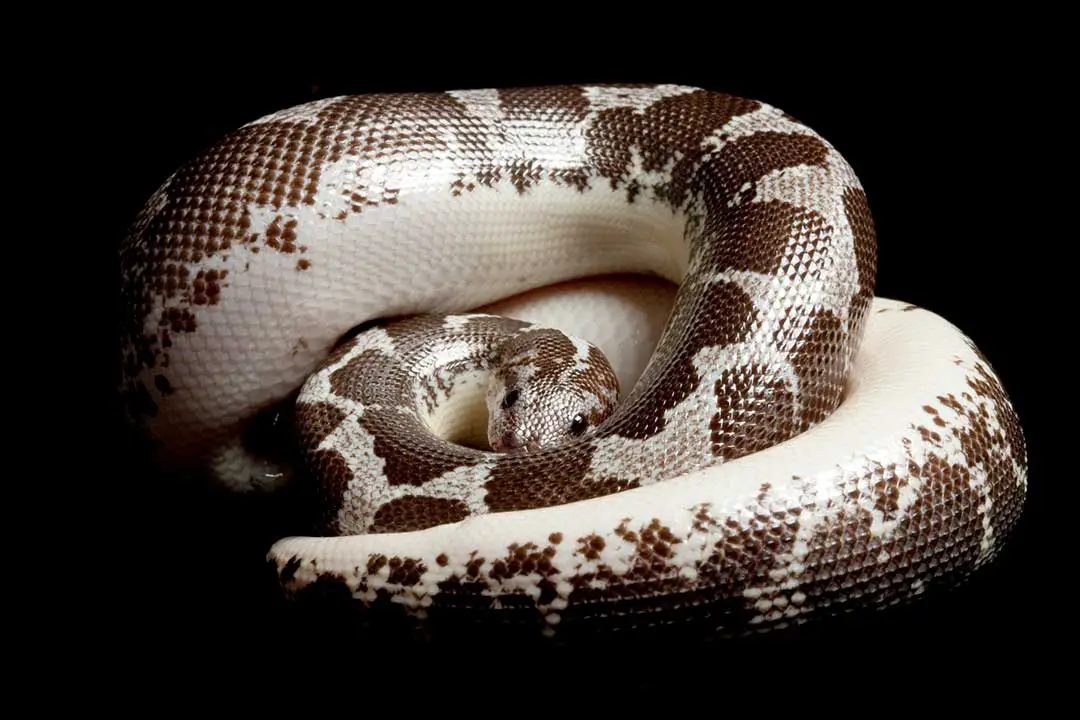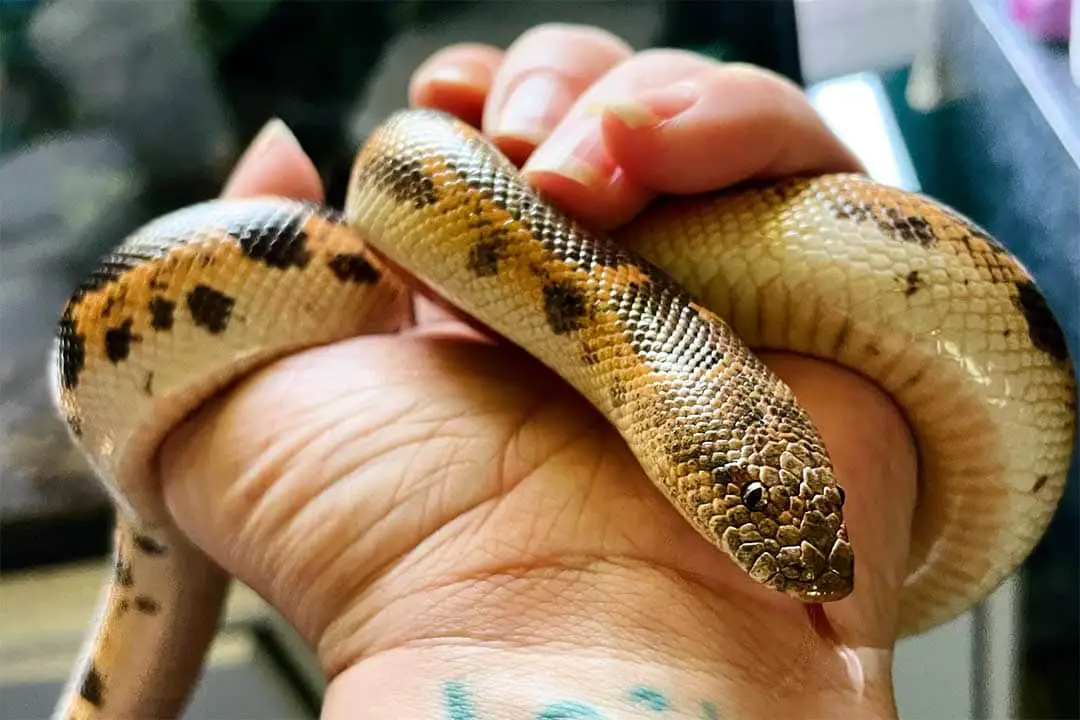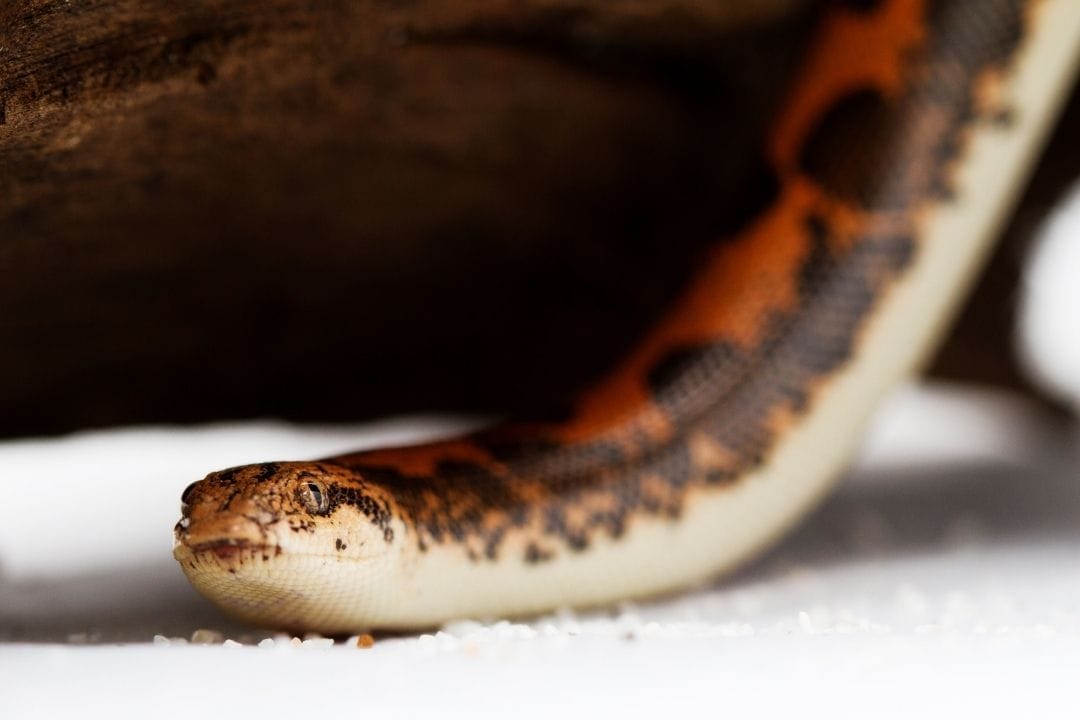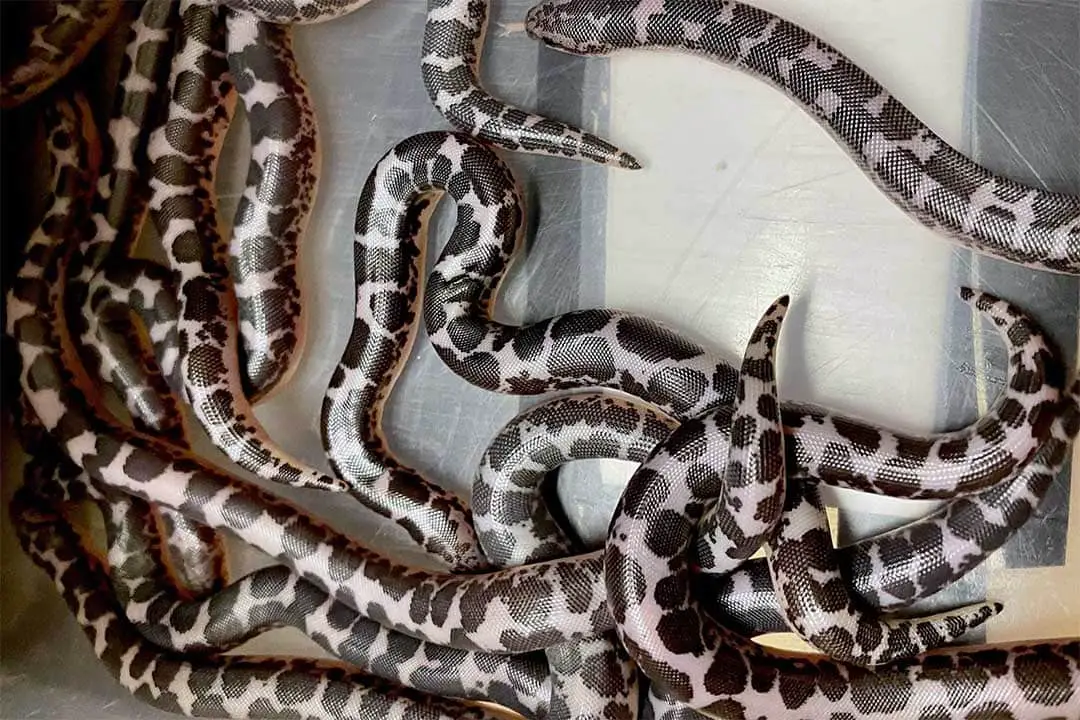Kenyan sand boas are friendly and docile snakes that have become widely popular. They do not require a lot, and it is easy to take care of them. With proper care and attention, they will be your friends for a long time. But you might wonder:
How big does a Kenyan Sand Boa get?
Kenyan Sand boa snakes grow up to 15-25 inches long, which makes them one of the smallest boa species in the world. Females are usually bigger than males, and their size is 25-30 inches. Males can get 15-18 inches long. This is a difference known as sexual dimorphism.
Because of their size, Kenyan sand boas are convenient because they do not require a large enclosure. That is why beginners choose them for pets until they gain experience.
Everything you need to know about caring for Kenyan Sand Boas in captivity:
Read our Kenyan Sand Boa Care Sheet (Complete Guide)
How Fast Do Kenyan Sand Boas Grow?
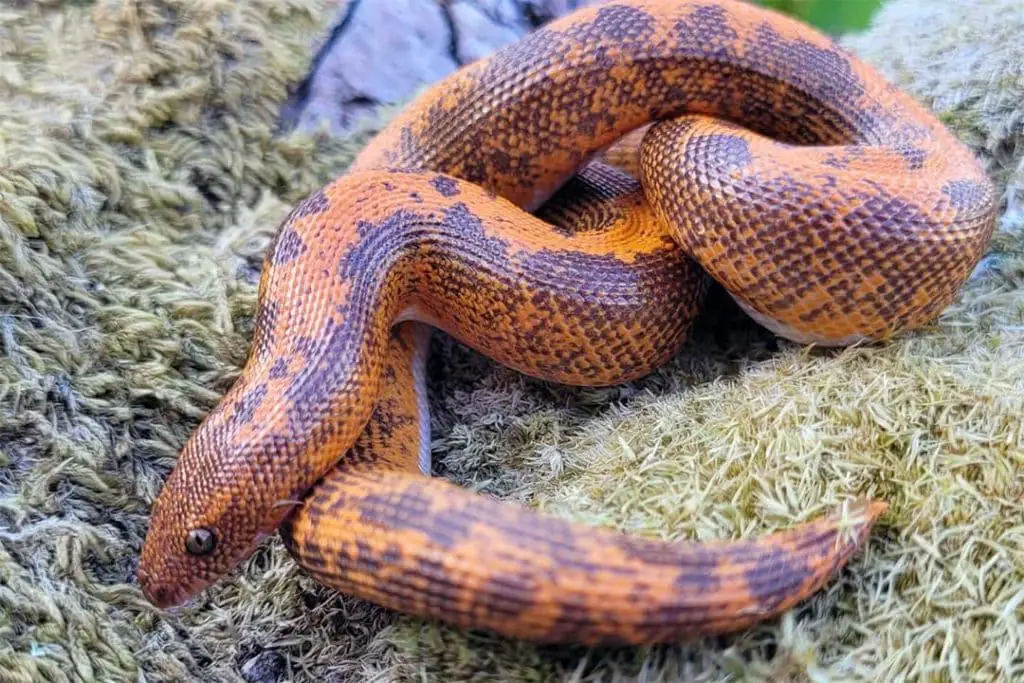
Snakes usually grow the fastest between the time they are born and the time they reach sexual maturity. Different snake species grow at different rates.
A baby snake, also known as a neonate, will resemble an adult member of the same species, they will only be smaller. Color differences may exist between an adult and a neonate as well.
Kenyan sand boas babies are typically 8 to 10 inches long when born and will grow for two to three years, depending on gender. Males reach full maturity at two years of age and measure 15 – 18 inches.
Females will not mature until they are over two feet long, which can take up to three years. Males reach full size when they are two years old, though slow growers may require an additional year.
Most breeders assess growth based on the weight in grams rather than length. Females should gain about 100g per year, and they should be 300-400g at three years old.
A lot of this has to do with the way you are taking care of your snake and I will touch upon this in the next section.
What Do Kenyan Sand Boas Eat to Grow?
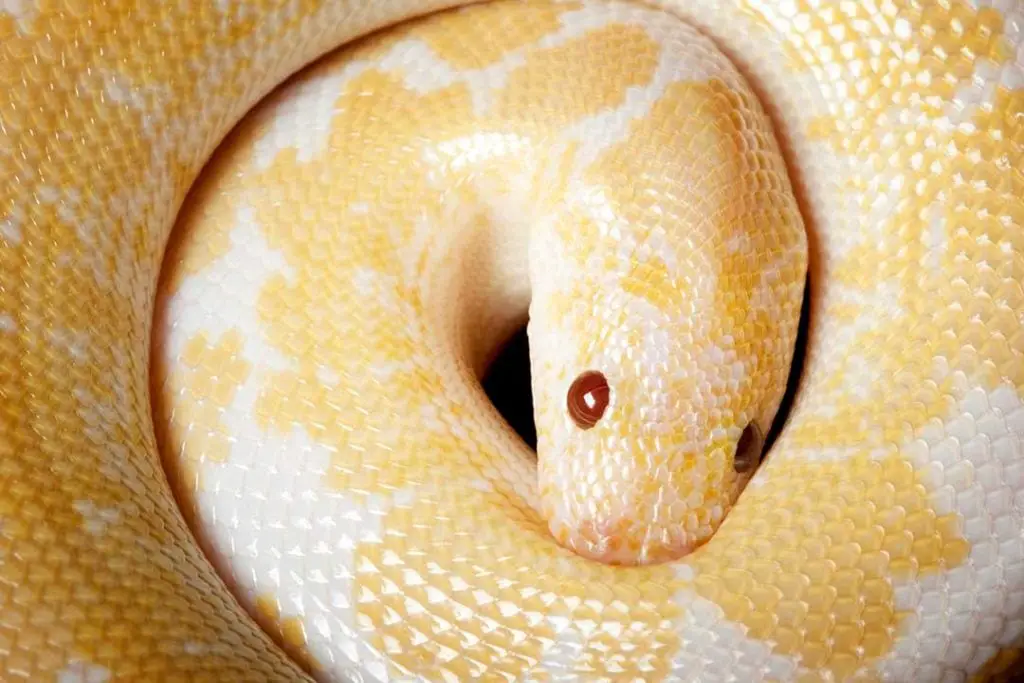
Food indeed affects the growth of snakes.
Kenyan sand boas are small snakes, but they need a healthy diet to grow to the desired length. Inadequate food can slow down snake growth, so always keep in mind the needs of your Kenyan sand boa and provide it with the amount of food it needs, especially baby snakes. Besides, do not forget to give your snake water, it is essential.
Kenyan sand boa mostly eats live reptiles, especially mice. Baby snakes love pinky mice, but as they grow, they will start eating frozen prey. You should feed baby snakes once a week.
A large hopper mouse is an ideal food for adult male Kenyan sand boa, and a jumbo-sized mouse female will surely satisfy Kenyan sand boa. Males consume less food than females, though there are always exceptions. Some males will eat whenever they have a chance.
Snake growth rates have to do with the food and temperatures high enough to allow full metabolic activity. Just as humans need food to grow and be strong, the same goes for snakes. That is why you should do research on your Kenyan sand boa and try to meet all the requirements because the health of your snake depends on you.
If you are a beginner and want to have a snake as a pet, always research about them, especially the way they eat. Food and water are important factors for a snake’s metabolism.
If you give Kenyan sand boa too little food, it will grow slowly, maybe even get sick. On the other hand, it is not good to overfeed snakes as well.
I recommend you make a good feeding schedule that you will stick to. Do not worry if your Kenyan sand boa sometimes refuses to eat, it is normal during shedding.
The temperature very much affects the digestion of Kenyan sand boa, and if the temperature is not proper, your snake cannot eat and digest food.
Monitor the behavior of your snake. If you notice it is not growing enough and is eating poorly, consult a veterinarian.
